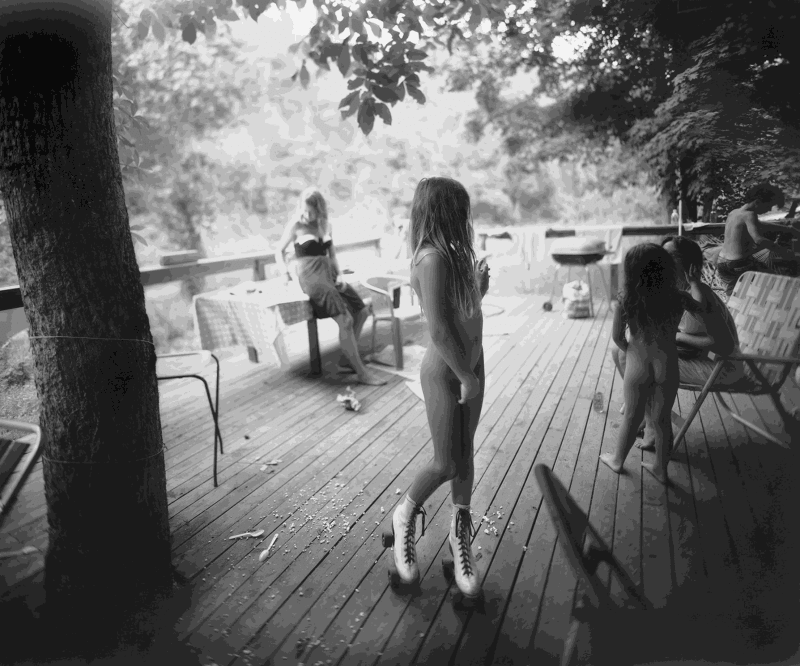In September 1992, I published my third book of photographs, "Immediate Family." The book contained 60 photographs from a decade-long series of more than 200 pictures of my children, Emmett, Jessie and Virginia, who were about 6, 4 and 1 when I started the project. The photographs show them going about their lives, sometimes without clothing, on our farm tucked into the Virginia hills. For miles in all directions, there was not a breathing soul. When we were on the farm, we were isolated, not just by geography but by the primitive living conditions: no electricity, no running water and, of course, no computer, no phone. Out of a conviction that my lens should remain open to the full scope of their childhood, and with the willing, creative participation of everyone involved, I photographed their triumphs, confusion, harmony and isolation, as well as the hardships that tend to befall children - bruises, vomit, bloody noses, wet beds - all of it.
I expected that the book would be received in much the same way as the one I published four years earlier, "At Twelve." That book, which showed pictures of young girls on the cusp of adolescence, resulted in modest attention and took about a decade to sell out its small press run. That's not what happened with "Immediate Family." Within three months, it sold out its first printing of 10,000, and the publisher soon ordered another printing, a sales pattern that continued. Suddenly, I was overwhelmed with mail, faxes, phone calls and strangers knocking on my door. Not even the remoteness of little Chitlin' Switch (as a friend called the area where we lived) protected us. During those first two years, I received 347 pieces of fan mail, much of it addressed simply to "Sally Mann, Lexington, VA." These letters came with photographs, of course, but also books, journal pages, handmade clothing, 35 preserved butterflies, jewelry, hand lotion, porcupine quills, Christmas-tree lights, sharks' teeth, recipes, paintings, a preserved bird, mummified cats, chocolate-chip cookies and a hand-painted statue of the Virgin Mary with a toothy demon on a leash.
The overwhelming response was due, in part, to an article about my work by Richard B. Woodward that appeared as a cover story in this magazine around the time the book came out. During the three days of interviews at my home, I was a sitting duck, preening on her nest without the least bit of concealment. So I can hardly fault Woodward for taking his shots at me. In my arrogance and certitude that everyone must see the work as I did, I left myself wide open to journalism's greatest hazard: quotations lacking context or the sense of irony or self-deprecating humor with which they were delivered.

